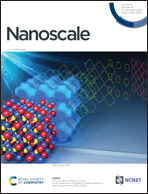A minireview on multiparameter-activated nanodevices for cancer imaging and therapy
Abstract
Tumor microenvironment (TME)-responsive nanodevices are essential tools for cancer imaging and therapy. Exploiting the advantages of molecular engineering, nanodevices are emerging for biomedical applications. In order to reach targeted cancer areas, activated nanodevices first respond to the TME and then serve as an actuator for sensing, imaging and therapy. Most nanodevices depend on a single parameter as an input for their downstream activation, potentially leading to inaccurate diagnostic results and poor therapeutic outcomes. However, in the TME, some biomarkers are cross-linked, and such correlated biomarkers are potentially useful for cancer imaging and theranostic applications. Based on this phenomenon, researchers have developed approaches for the construction of multiparameter-activated nanodevices (MANs) to improve accuracy. This minireview summarizes the recent advances in the development of MANs for cancer imaging including fluorescence imaging, photoacoustic (PA) imaging, magnetic resonance imaging (MRI) and computed tomography (CT) imaging, as well as cancer therapy including radiotherapy, chemotherapy, photoinduced therapy and immunotherapy. We highlight different approaches for improving the specificity and precision of cancer imaging and therapy. In the future, MANs will show promise for clinical work in multimodal diagnosis and therapeutics.

- This article is part of the themed collection: Recent Review Articles


 Please wait while we load your content...
Please wait while we load your content...